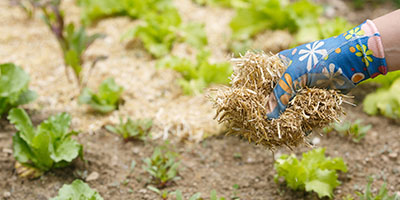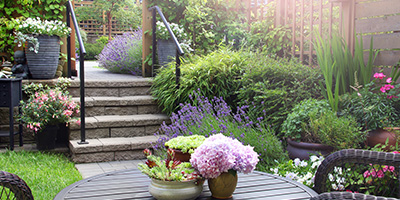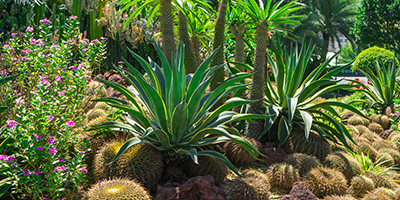How to Create a Beautiful Backyard

Tips for Designing and Maintaining Your Yard
If you have ever flipped through a copy of Better Homes & Gardens, or perused a few DIY blogs, then you’ve probably noticed that every pictured home has something in common – a ridiculously beautiful backyard. You know the ones I mean, incredibly lush lawns, sunny patios and beautiful flower arrangements that look like they’ve been plucked from a garden show.
If you feel a little yard-envy, it’s okay: we’ve all been there. But in truth, there’s no reason to be jealous of those manicured magazine cover-worthy yards. Attaining that level of backyard beauty is entirely possible for an amateur homeowner with a passion for DIY home improvement. All it takes is a little blood, sweat and a few helpful landscaping tips.
Landscaping Tip #1: Practice the Art of Lawn Maintenance
A beautiful backyard begins with the lawn. Specifically, learning how to maintain a lawn and avoiding some of the most common issues that can crop up, such as weeds or brown spots. Here are a few basic maintenance skills that will help you keep your lawn green and lush.
Lawn Maintenance Tips for Beginners
Remove Weeds
What it does: Weeds can quickly overwhelm your yard and dot the landscape. The key is to pull them up entirely, including the roots, so they cannot regrow.
How to do it: There are multiple tools available for weeding, including hoes and weeders designed specifically for tearing out these problematic plants. But if your lawn is already overrun by weeds, then herbicides are going to be more effective than pulling them up. You can either use a spray to directly kill the weeds or use a weed-and-feed fertilizer that will bolster your grass while also killing common weeds, such as dandelions and dollarweeds.
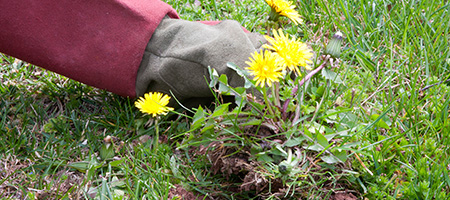

“The first thing I always look at is just how much stress has my lawn gone through over the summer. Do I have a few places here or there that appear to be problems or have I got a much bigger issue to tackle?… It’s important to answer this question as it can determine whether or not you just need to use some seed in a few areas or if you may need to invest in sod which are large pieces of grass that can be installed in strips.”
Susan Brandt, Founder and President, Blooming Secrets
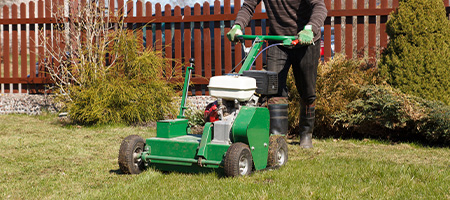
Aerate the Soil
What it does: Soil compaction can hamper the growth of grass by keeping water from percolating through the soil. This is where an aerator comes in handy.
How to do it: You can either rent a powered core aerator or use a hand rake to perforate your lawn, allowing water, air and nutrients to penetrate deep into the soil.
When to do it: It is generally best to aerate your lawn in the fall, before the cold weather sets in.
Dethatch Your Grass
What it does: Just as aeration loosens up the soil, dethatching helps thin out the layer of organic debris that lies within the top layer of soil. A layer of thatch about three-quarters of an inch thick is healthy, but anything more than that must be raked away.
How to do it: Use either a thatching rake or a power dethatcher to rake away the excess thatch.
When to do it: It is usually best to do a light dethatching in the spring, followed by a heavier dethatching in late summer/early fall. Though the needs of your own lawn may vary between seasons.
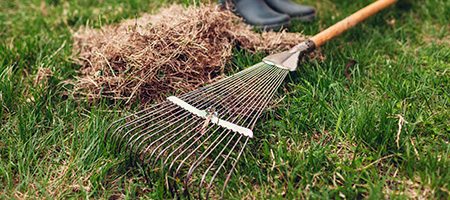
Not sure what to do with your old grass and soil?
Check out our Yard Waste Disposal Guide!

“I see popular trends that people bag up their clippings and dispose of them. These lawn clippings have useful nutrients and are a great, cheap resource to allow your lawn to flourish. Use the mulch setting on your mower. The lawn clippings will replenish the thatch layer of nutrients and leave your lawn fuller and greener over time. A well-treated thatch layer will help retain water in the soil and boost the resilience of your lawn during extreme temperatures.”
Jeremy Griffin, Just Right Lawns
Level the Lawn
What it does: Leveling your lawn will remove any dips in the terrain that can cause people or pets to trip and fall. It also has the added benefit of improving the look and feel of your backyard.
How to do it: Gene Caballero of GreenPal has a thorough guide you can follow to even out your lawn:

"Step #1: Grab Your Tools
First of all, you will need a shovel that is square nosed. You will be able to spread the lawn mix with this type of shovel. You will also need a straight garden or solid bow rake to help with leveling. You will also want to purchase one or two buckets. You will use these for the spread mixture of compost and sand.
Step #2: Gather Supplies
Be sure to choose an orange sand instead of a playground or river sand when you are shopping for supplies. The other two types of sand will not harm your lawn, however, it is good to know that the orange sand will actually contain nutritive value and be finer for your lawn.
Step #3: Fill in the Holes
The mix that you make will be used to fill in any uneven areas. After filling in the holes you will use the rake to level it with the surface of the lawn. This will even up any lower areas and allow your lawn to continue to grow evenly.
Step #4: Let It Settle and Cover Again
After you have finished that part, you should let it settle for a little while. If you want to, you can dampen it, but be sure not to wet it entirely. After waiting several hours, you should repeat the leveling and spreading process with a topsoil that is high quality…Be sure to let it settle once again before spreading and raking one last layer of good compost over the uneven areas of your lawn."
Gene Caballero, Co-Founder, GreenPal
Landscaping Tip #2: Learn How to Maintain a Garden
A garden is one of the greatest ways to add some life and color to your yard, but it can also be a lot harder to maintain than a lawn. You should only attempt to grow a garden if you have the time to devote to it. Otherwise, you may end up with a gloomy patch of wilted plants adorning your flowerbed. Here are some beginner gardening tips that will help you grow a new garden from scratch.
Gardening Tips and Tricks
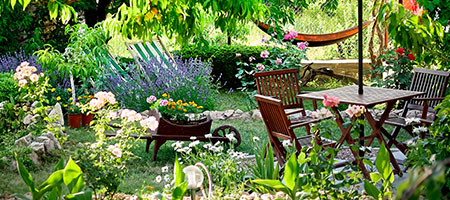
Choose a Garden
Will yours be a beautiful bouquet of flowers? Or is a vegetable garden more to your liking? Do you love the smell of fresh, handpicked basil? Then an herb garden might be right up your alley. You could always mix it up and plant some flowers alongside your tomatoes and basil – marigolds make a great companion plant to many fruits and vegetables. But before you start your own backyard farm, there’s one piece of advice you should keep in mind:
Start Small
It is very easy to bite off more than you can chew with any garden. That’s why it is always smart to start small and work your way up. Start with a few good beginner plants, such as sunflowers or daffodils, and gradually build out your garden as it begins to grow. Remember, more plants means your garden will need more care and attention.
Here are some additional tips to follow when working on your garden and home landscape:
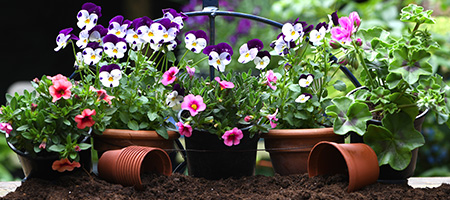

" - Get planters that are bigger than you think you need, a planter that is too small will un-impress.
- Do up the display! Don’t skimp on plants and make sure that you change out the planting for each season – Spring, Summer, Fall and Winter.
- Choose a paving material that compliments your home. We prefer natural materials like stone and clay pavers.
- Keep plants trimmed off the walkway so your guests don’t have to bushwhack through a jungle."
Craig Jenkins-Sutton, Co-Founder and President, Topiarius
Water the Right Amount
Different plants require a different amount of watering. Seed packets and plants in containers should include instructions on proper watering for that specific species. If planting vegetables, a good rule of thumb is to water an inch per week, unless you are in a hot climate, in which case your vegetables may need two inches or more.
Flower gardens will vary based on the species you’ve planted, but you will generally want to keep the first six inches of soil moist for annuals. Perennials, shrubs and trees need soil that is moist to 12 inches deep. Use a finger or shovel to see how far down your water is reaching.
Landscaping Tip #3: Decide on a Landscape Design
A little DIY landscaping can go a long way towards creating a picture-perfect backyard. The only trick is figuring out what you want your backyard to be: a place to sit outside and enjoy the shade? Maybe a space to gather around a fire pit on those cool autumn nights? Anything is possible as long as you have a plan in place. Here are a few quick landscaping tips to follow when designing your backyard.
Landscaping Tips for the Beginner
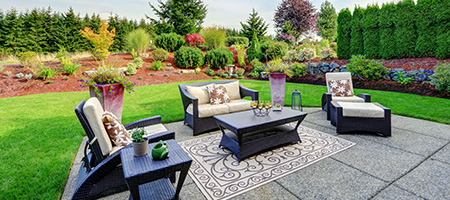
Decide What Your Yard Needs
Take the time to decide what you and your family needs. Do your kids need a space to play and run around in? Would you like to build a patio off of the living room? What about adding flowerbeds or a garden? These are all elements of a beautiful backyard, but they take some planning in order to bring into reality. Create a full list of everything you’d like to do and use it as a roadmap as you slowly start your landscaping.

“Something we advise homeowners that use our system to save money on their landscape maintenance and beautify things is to install river rock in their gardens and landscaping beds. This serves as a one-time, upfront investment and adds beauty to the lawn and landscape. The cool thing is that it never has to be re-dressed or redone next season as it’s a one-time cost; it literally has a return on investment.”
Bryan Clayton, CEO, GreenPal
Go Slowly
This is possibly the most important tip to follow when DIYing your backyard landscaping. Slow and gradual progress will allow you to see how things look first before filling in every little space. This is especially true if you are putting in new flowerbeds or planting trees in your backyard. You won’t have the full picture until everything is grown, so take your time when adding landscaping features and adjust your overall plan accordingly.
Watch the Wind and Sun
It may not be obvious, but wind and sun patterns can have a significant impact on your landscaping design. For instance, if you place a patio or sitting area on the west side of your house, you may end up with too much sun in the late summer. Likewise, putting a fire pit or barbecue station near a sharp corner can create a gust of wind that will blow away any chance for roasted marshmallows and hot dogs.
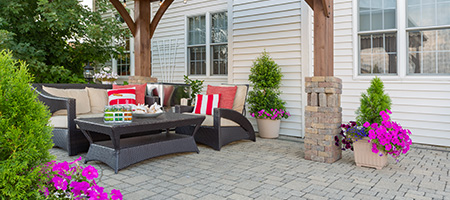
By following all of these tips, you’ll be well on your way to having a backyard worthy of a magazine cover. Remember that it won’t happen overnight, but as long as you keep working at it you’ll be able to sit back on a cool summer evening and enjoy the sight of your beautiful backyard.

